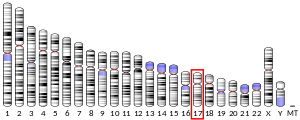
PELP-1

2704375273ENSG00000141456ENSMUSG00000018921Q8IZL8Q9DBD5NM_014389NM_001278241NM_029231NP_001265170NP_055204NP_083507Proline-, glutamic acid- and leucine-rich protein 1 (PELP1) also known as modulator of non-genomic activity of estrogen receptor (MNAR) and transcription factor HMX3 is a protein that in humans is encoded by the PELP1 gene. is a transcriptional corepressor for nuclear receptors such as glucocorticoid receptors and a coactivator for estrogen receptors. Proline-, glutamic acid- and leucine-rich protein 1 (PELP1) also known as modulator of non-genomic activity of estrogen receptor (MNAR) and transcription factor HMX3 is a protein that in humans is encoded by the PELP1 gene. is a transcriptional corepressor for nuclear receptors such as glucocorticoid receptors and a coactivator for estrogen receptors. Proline-, glutamic acid-, and leucine-rich protein 1 (PELP1) is transcription coregulator and modulates functions of several hormonal receptors and transcription factors. PELP1 plays essential roles in hormonal signaling, cell cycle progression, and ribosomal biogenesis. PELP1 expression is upregulated in several cancers; its deregulation contributes to hormonal therapy resistance and metastasis; therefore, PELP1 represents a novel therapeutic target for many cancers. PELP1 is located on chromosome 17p13.2 and PELP1 is expressed in a wide variety of tissues; its highest expression levels are found in the brain, testes, ovaries, and uterus. Currently, there are two known isoforms (long 3.8 Kb and short 3.4 Kb) and short isoform is widely expressed in cancer cells. The PELP1 protein encodes a protein of 1130 amino acids, and exhibits both cytoplasmic and nuclear localization depending on the tissue. PELP1 lacks known enzymatic activity and functions as a scaffolding protein. It contains 10 NR-interacting boxes (LXXLL motifs) and functions as a coregulator of several nuclear receptors via its LXXLL motifs including ESR1, ESR2, ERR-alpha, PR, GR, AR, and RXR. PELP1 also functions as a coregulator of several other transcription factors, including AP1, SP1, NFkB, STAT3, and FHL2. PELP1 has a histone binding domain and interacts with chromatin-modifying complexes, including CBP/p300, histone deacetylase 2, histones, SUMO2, lysine-specific demethylase 1 (KDM1), PRMT6, and CARM1. PELP1 also interacts with cell cycle regulators such as pRb. E2F1, and p53. PELP1 is phosphorylated by hormonal and growth factor signals. PELP1 phosphorylation status is also influenced by cell cycle progression, and it is a substrate of CDKs. Further, PELP1 is phosphorylated by DNA damage induced kinases (ATM, ATR, DNA-PKcs). PELP1 functions as a coactivator of several NRs and regulates genes involved in proliferation and cancer progression. PELP1 enhances transcription functions of ESR1, ESR2, AR, GR, E2F and STAT3. PELP1 participates in activation of ESR1 extra-nuclear actions by coupling ESR1 with Src kinase PI3K STAT3 ILK1 and mTOR PELP1 participates in E2-mediated cell proliferation and is a substrate of CDK4/cyclin D1, CDK2/cyclin E and CDK2/cyclin A complexes. Studies using TG mice model suggested the existence of an autocrine loop involving the CDK–cyclin D1–PELP1 axis in promoting mammary tumorigenesis PELP1 has a histone binding domain; functions as a reader of histone modifications, interacts with epigenetic modifiers such as HDAC2, KDM1, PRMT6, CARM1; and facilitates activation of genes involved in proliferation and cancer progression. PELP1 modulates the expression of miRs, PELP1-mediated epigenetic changes play important role in the regulation miR expression and many of PELP1 mediated miRS are involved in promoting metastasis. PELP1 is needed for optimal DNA damage response, is phosphorylated by DDR kinases and is important for p53 coactivation function. PELP1 also interacts with MTp53, regulates its recruitment, and alters MTp53 target gene expression. PELP1 depletion contributes to increased stability of E2F1. PELP1 binds RNA, and participates in RNA splicing. The PELP1-regulated genome includes several uniquely spliced isoforms. Mechanistic studies showed that PELP1 interaction with the arginine methyltransferase PRMT6 plays a role in RNA splicing. PELP1 plays critical roles in 60S ribosomal subunit synthesis and ribosomal RNA transcription. The SENP3-associated complex comprising PELP1, TEX10 and WDR18 is involved in maturation and nucleolar release of the large ribosomal subunit. SUMO conjugation/deconjugation of PELP1 controls its dynamic association with the AAA ATPase MDN1, a key factor of pre-60S remodeling. Modification of PELP1 promotes the recruitment of MDN1 to pre-60S particles, while deSUMOylation is needed to release both MDN1 and PELP1 from pre-ribosomes.
